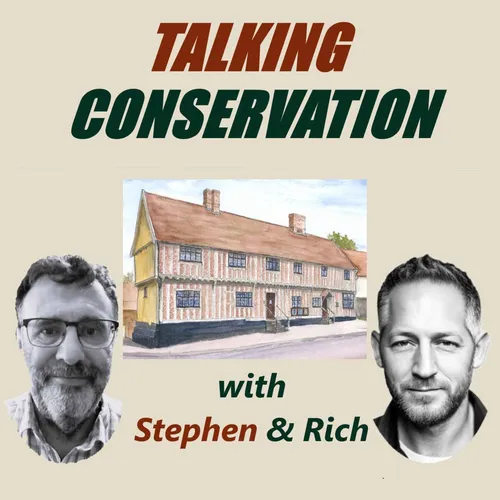Which Lime Mortar to Use? Part 3 – Floors, Chimneys & Exposured Areas
- Author
- Stephen Boniface and Rich Alesbury
- Published
- Fri 04 Jul 2025
- Episode Link
- https://podcasters.spotify.com/pod/show/talking-conservation/episodes/Which-Lime-Mortar-to-Use--Part-3--Floors--Chimneys--Exposured-Areas-e350tgt
Not sure which lime to use for a chimney, solid floor, or coping stone? In this episode of Talking Conservation, we explain how to choose and apply the right lime mix for floor construction and high-exposure areas in older homes.
In this episode, Rich and Stephen continue their deep dive into lime mortars, exploring how to apply them in real-world contexts where performance under pressure really matters.
We cover the use of limecrete floors and lime ash floors, debunking common myths about moisture performance and clarifying where lime-based solid floors offer real benefits (and where they don’t).
We also examine high-exposure areas such as chimneys, ridge tiles, parapets, and copings — where material choice is critical. Should you use NHL 3.5? NHL 5? Is cement ever appropriate? We walk through the options and trade-offs.
Whether you're repairing flaunchings or considering a breathable solid floor alternative, this episode gives you practical advice grounded in conservation principles.
👉 Missed the earlier episodes? Start here:• Ep.1: The Lime Cycle Explained – Where lime comes from, how it’s made, and how it changes chemically from limestone to lime and back again.• Ep.2: Lime Mortar Types Explained – Air lime, NHL, hot lime, and pozzolans demystified — we explain their properties and behaviour.• Ep.3: Which Lime to Use? Part 1 – Mortars for Building & Pointing Older Buildings – Where and how to use the different lime types for masonry and repointing.
• Ep.4: Which Lime to Use? Part 2 – Plasters & Renders - Which types of plasters to use internally and pros and cons of the various options for external renders.
👉 Subscribe to our channel for future episodes on conservation, traditional buildings, and expert insight.👉 Need personalised advice? Book a consultation at www.expertible.com👉 Professionals can also book mentoring or training via Stephen’s site: www.beconservation.com
#BuildingConservation #TraditionalMaterials #LimeMortar #HistoricBuildings #Retrofitting #HeritageSkills #TalkingConservation #Architects #Surveyors #Builders #ConservationProfessionals
